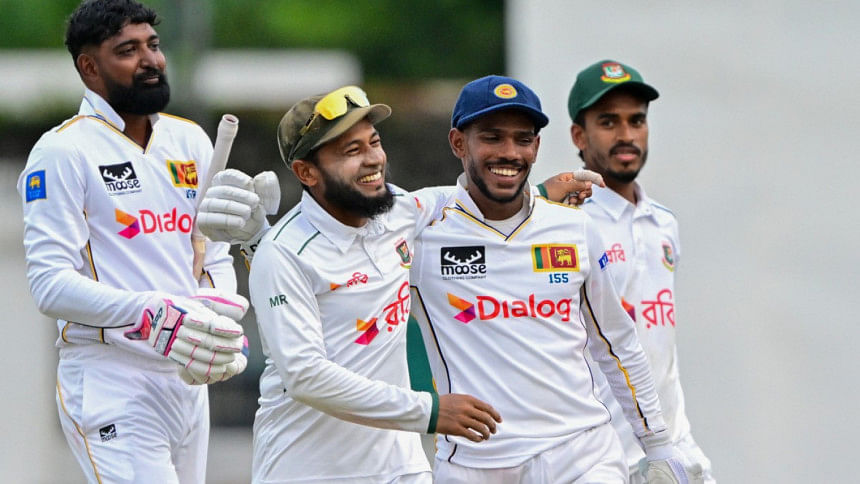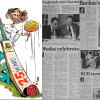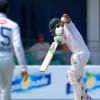Lankans provide lessons for Bangladesh

Bangladesh captain Najmul Hossain Shanto was left scratching his head throughout the day -- figuratively, for ideas, and literally, out of frustration -- as Sri Lanka bolstered their control over the Colombo Test, thanks to Pathum Nissanka and Co on the second day of the second and final Test today.
Off-spinner Taijul Islam put in a 32-over shift, keeping things tight on one end only to see pressure getting released from the other, as Bangladesh were unsuccessful in breaking the resolve of Nissanka, whose unbeaten 146 catapulted the hosts to 290-2 and end the day with a 43-run lead.
The pitch that had shown signs of life on Day 1 looked completely docile once the Sri Lankan innings began today.
But more than the pitch actually settling down and improving for batting, it was the controlled aggression of the Sri Lankan batters and inconsistent bowling from the visitors that made it seem that way.
Taijul, who earlier in the day pushed the team's total to 247 with a 33-run knock, delivered 41 percent of the total deliveries Bangladesh bowled on the day, conceding 90 runs at an economy rate of 2.81 and claiming one wicket.
The rest of the five bowlers banded together for the remaining 46 overs, which went for 200 runs at 4.35 runs per over.
Openers Nissanka and Lahiru Udana set the tone of the innings with the opening stand, as they pounced on every bad delivery from the Bangladesh pacers and brought up the team 50 in just 53 balls.
Taijul broke the opening stand on 88, trapping Udana lbw for 40, but that didn't alter the momentum at all as Nissanka and the experienced Dinesh Chandimal maintained the same tempo in a mammoth 194-run second wicket stand.
Chandimal missed out on a hundred, getting caught off Nayeem Hasan late in the day, but the damage had already been done for Bangladesh.
Overall, Sri Lanka scored at a run-rate of 3.71, almost identical to their run-rate in the first innings of the previous Test in Galle, which was 3.69.
Had the Lankan batters not played their shots and instead scored at the same rate as Bangladesh had done in the first innings, 3.10, they would have ended the day still trailing Bangladesh by five runs.
But Sri Lanka remained consistent with their batting approach as Nissanka and the others took the game by the scruff of the neck with their proactive batting.
The positive intent shown by Sri Lanka is not an anomaly, as teams currently are progressively scoring at a higher rate in red-ball cricket, with the game in general shifting towards a more result-oriented approach.
Bangladesh showed no real intent to push for a win in the earlier Test, scoring at a run-rate of 3.27 in the second innings, and as a result, a three-hour rain interruption on the final day did not leave them with enough time to take 10 wickets in the second innings and the match ended in a draw.
But even if rain plays spoilsport in the following three days, Sri Lanka are now well-positioned to earn a sizeable lead and test Bangladesh in their second innings.
Favourable conditions coupled with the correct approach have placed Sri Lanka in a position of strength in Colombo, and along the way, they have also imparted a lesson for Bangladesh on what the batting approach should be in these conditions.

 For all latest news, follow The Daily Star's Google News channel.
For all latest news, follow The Daily Star's Google News channel. 








Comments